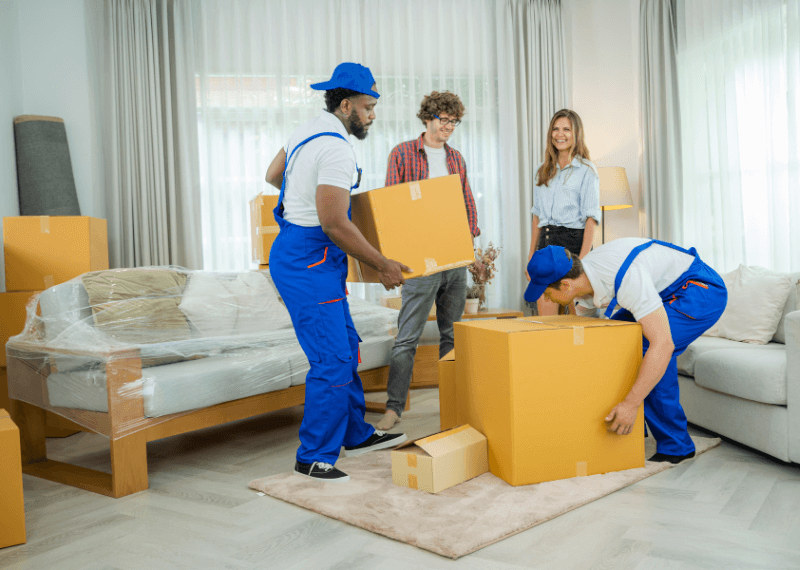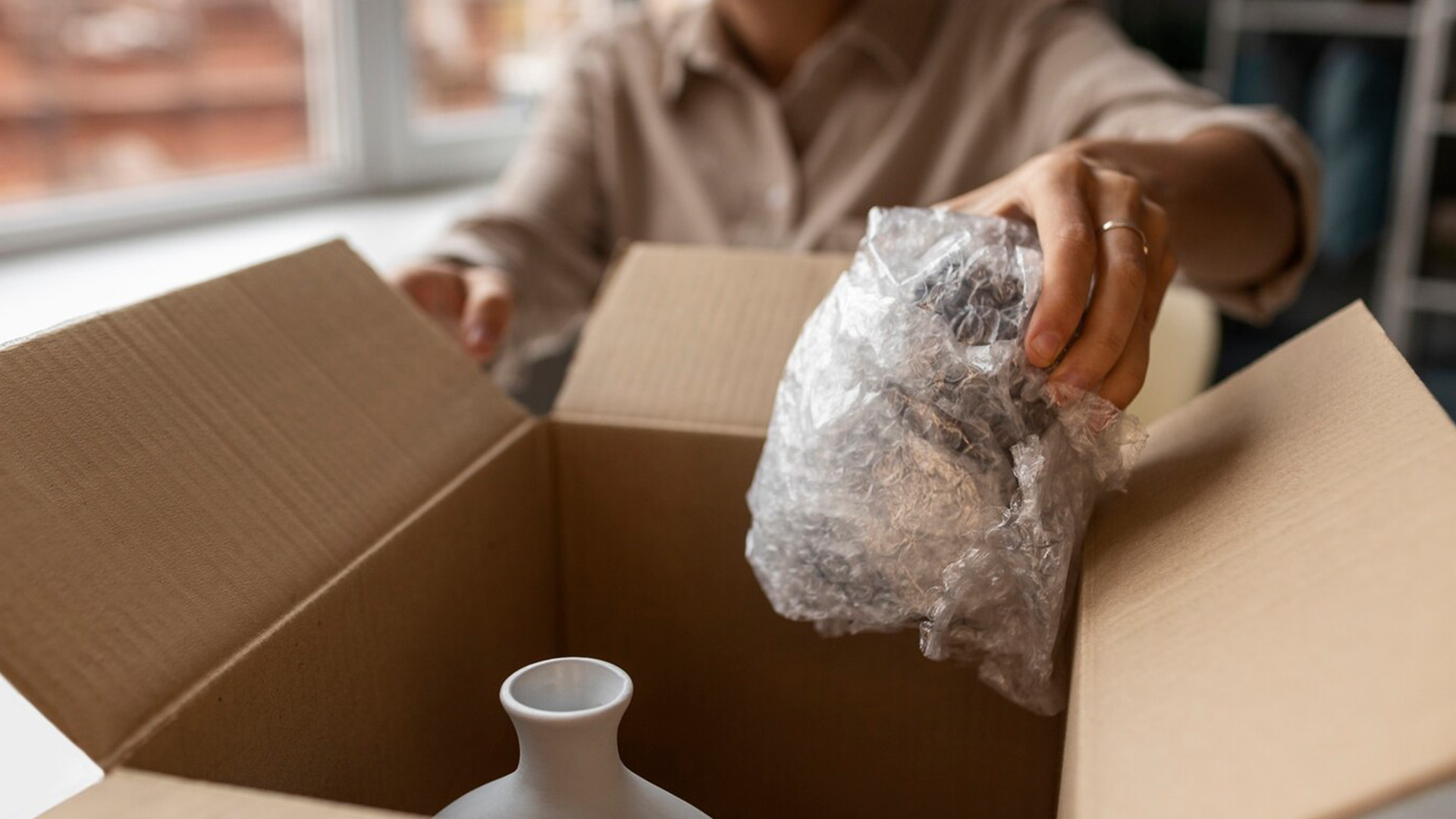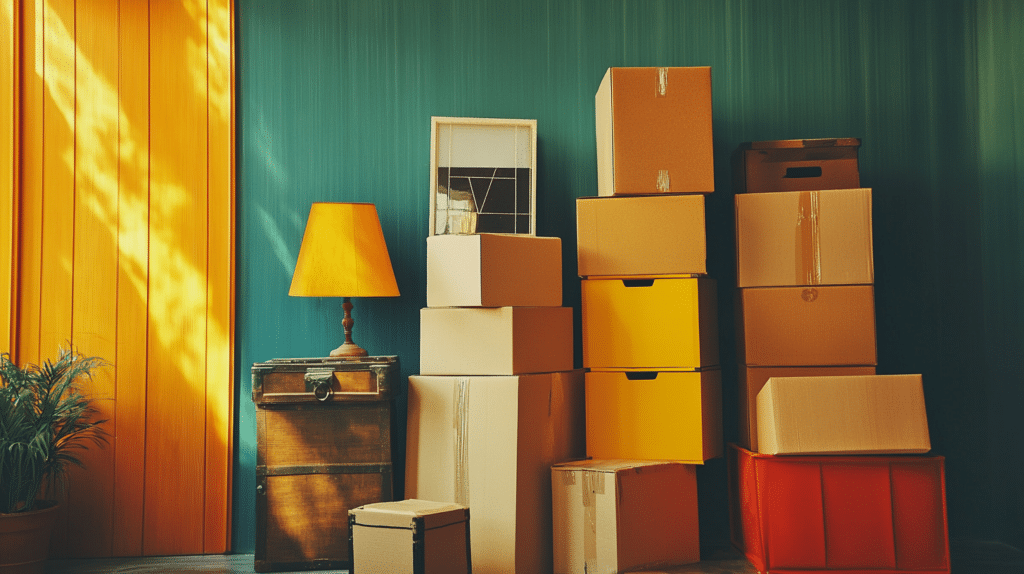You’re getting out of town, and you’re taking your stuff with you. But if you’re like the millions of other Americans who’ve decided to move house, you’ll also need a guide so you don’t break anything.
It doesn’t matter if you’ve just landed a dream job, or you’re just searching for a change in scenery – you’ll still have to pack up some boxes, and wrap up some fragile items. With every move, there’s a whole menu of must-have supplies and materials, and a to-do list that can make your head spin.
Our friends at iMoving have been in the moving game for over 20 years. They’ve helped customers at every step of the process, from dispatch to delivery. And over all that time, they learned a thing or two about careful packing.
In this article, we’ll walk you through the best ways to move fragile items, and we’ll also show you how to pack and pad everything if you’re doing it yourself. Read on to get started, and don’t be afraid to contact the pros if you need a little extra help!
Method 1: Hiring a Professional Moving Company
Yes, this one sounds like a bit of a cop-out, but it’s actually a perfectly valid approach to long distance moving. Professional movers may seem like an unnecessary expense, but they’re not as expensive as most people expect. In fact, according to iMoving, some long distance moves can be done in less than a thousand bucks. (It all depends on how far you’re going, and how much you’re taking.)
When you hire pro movers, they’ll take care of everything – and we mean everything. Wrapping,, packing, boxing… the list goes on. It’s a completely hands-off experience for you, and the convenience is worth the extra cash.
Moving means a totally fresh start, but you can’t focus on the fun stuff if you’re stressing out over packing up all your stuff, loading it into a truck, and unpacking it yourself after a long (and frustrating) drive. For a couple hundred bucks – or a couple grand, if you’ve got a McMansion and you’re moving cross country – you won’t have to worry about packing at all.
Method 2: Hire Moving Labor

Not a lot of people know about this one: You can actually hire professional movers to take care of just the hard stuff, and DIY the rest. This is awesome for two reasons: One, you don’t have to risk injury by lifting big stuff by yourself. Two, the movers who show up will have all the gear and equipment for wrapping up those fragile items.
If you’re committed to a DIY move, moving labor can make a huge difference. It costs less than hiring the pros to handle the whole process, but you’re still getting access to professional packing, packing supplies, and that nice little ego-boost when you take the controls and handle the rest of the job.
Method 3: Complete DIY
If you looked up how to move fragile and valuable items, chances are, you’re trying to DIY it from the ground-up. While this may not be iMoving’s recommended approach, they still have some important pointers you can use to make your life easier.
- Safety first. Seriously. Keep your path clear of any piled-up carpets, loose packing supplies, pets, and children. Ever stepped on a bubble wrap that was lying on the carpet? Not a lot of traction.
- Measure beforehand. Is that couch gonna fit through all those doorways? Are you SURE? Measure your furniture before you start moving it around. A tape measure can go a long way. And so can a screwdriver if it turns out some doors are in the way.
- Disassemble the big stuff. Hopefully, you didn’t toss the IKEA instructions. Disassembling larger items of furniture makes it way easier to move – just make sure you bag up the hardware and tape it to one of the larger pieces.
- Buy supplies. And then buy more. Chances are, you’re going to run out of either tape, boxes, or packing materials at least once. Always buy more than you think you’ll need, and make sure you get a nice variety of box sizes.
A Guide to Wrapping Fragile Items

- Before you start putting stuff in the box, reinforce it with plenty of tape. See those seams on the bottom? Tape ‘em up. Twice. Every gap should get sealed up with more tape, inside and out.
- Label the box before you load it. This helps you keep your boxes consistent, and you’ll always know what boxes have what items – even if you’re not quite done packing everything up. iMoving recommends labeling by room.
- Pad the bottom. Doesn’t have to be anything crazy, but a layer of bubble wrap is one more layer of protection underneath all your items.
- Use an insert for glassware. Some boxes are designed for cups, glasses, and mugs. They come with collapsible cardboard inserts that will keep everything in place during transit.
- Wrap fragile items individually. If they’re hollow items, like glassware or containers, put lots of padding inside them so they can’t be crushed. The goal is to reduce empty space whenever possible.
- Heaviest stuff on bottom. Just like packing up your groceries, you want a firm foundation and all the eggs on top. In this case, the eggs are your fragilest items, and the firm foundation is something a little sturdier, like cutting boards or cookbooks.
- Stack vertically. Never place fragile items sideways. They’ve got a dedicated top and bottom for a reason, and they’re designed to stay right-side up. Any weight placed where there shouldn’t be weight is going to cause damage.
- Minimize empty space. Remember when we told you to stuff padding inside your hollow items to reduce the risk of crushing? The same applies to the box itself. Plus, less empty space means less room for your items to tilt, roll, or otherwise wobble around.
- Tape the box shut, and put it somewhere low-traffic. You just spent all that time packing up your fragile items. Put the box somewhere safe, too. And don’t forget to double-tape the top of the box, too.
Wrapping Up (Pun Intended):
Now you know how to wrap your valuable items. But do you know who’s going to be doing the moving? Pay a visit to our friends at iMoving, and use their platform to shop, compare prices, and book your movers entirely online. Best of luck with your move, and don’t forget to double-wrap!

